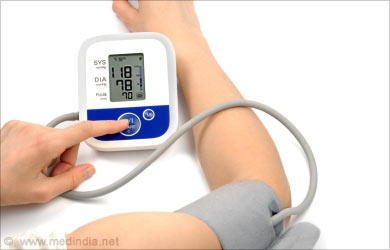Diagnosis and Treatment of White-coat Syndrome
Diagnosis of White-coat Syndrome
The individuals with white-coat syndrome can be characterized by normal blood pressure at all times except during a doctor’s appointment or in a clinical setting. The individuals can be further characterized by the absence of a decrease in blood pressure with the intake of antihypertensive drugs. Organ damage is absent in the absence of hypertension. There is minimal risk of cardiovascular damage in such individuals. The following methods enable the diagnosis of individuals with the white-coat syndrome.
1. Ambulatory blood pressure monitoring (ABPM): Blood pressure monitored by the 24-hour ABPM is currently the method utilized for diagnosing individuals with white-coat hypertension. The devices are light and use an oscillometric method for measuring the blood pressure and the heart rate for the whole day. The measurements include the initial reading, the mean pressure measurement in the first hour, the maximum values in the first hour, the final reading, the mean pressure in the last hour, and the maximum values in the last hour. Blood pressure values exceeding systolic pressure of 140 mm Hg and diastolic pressure of 90 mmHg, are diagnostic of the white-coat hypertensive effect. The threshold limit for ABPM is 135/85 mmHg. To avoid misdiagnosing patients with hypertension, a 24-hour-ABPM is recommended every 6 to 12 months. Patients with high office blood pressure but normal ABPM are diagnosed with white-coat hypertension. If the office blood pressure is normal while the ABPM is high, the individual has masked hypertension. The individuals with confirmed white-coat hypertension are prevented from consuming unnecessary hypertension drugs.

2. Self-measurement of blood pressure: The individuals with white-coat hypertension are recommended to measure their own blood pressure or in other words, self-measurement of blood pressure. Consistent values are obtained in the absence of white-coat hypertension. This enables the appropriate diagnosis of an individual regarding hypertension or the absence of it. During self-measurement, the individuals displaying a blood pressure >135/85 mmHg suffer from hypertension. Individuals are able to obtain blood pressure readings over a consistent period of time during the day. However, small variations in blood pressure or the records of blood pressure values during sleep cannot be measured with self-measurement as compared with ABPM. In addition, untreated individuals who measure their own blood pressure at home are at a slightly higher risk of cardiovascular disease compared to those who take antihypertensive drugs.
3. Deep-breath test: A study by a Japanese group observed that the individuals with white-coat hypertension, who take deep breaths, demonstrate a decrease in blood pressure. The test includes 5 deep breaths in a minute, while seated. A second study observed that the deep-breath test was just as capable of reducing the blood pressure of treated hypertensive individuals with the white-coat effect.
Treatment of White-coat Syndrome
White-coat syndrome does not pose a risk to individuals in the development of serious cardiovascular damage or other health conditions. There is no specific treatment of the individuals with the white–coat syndrome. Pharmacological treatment is not advised unless the patient displays hypertension. However, patients with the white-coat syndrome should be monitored for their blood pressure at regular intervals (eg, once a year). The office blood pressure as well as the self-measured blood pressure or the ABPM readings should be taken regularly. The chance of the patients progressing to hypertension increases with time and age. To avoid the situation, regular check-ups are advised. Other factors that need to be monitored are the regulation of glucose and lipid levels, the control of salt intake, the regulation of physical exercise, the modification of lifestyle, and avoiding smoking.







